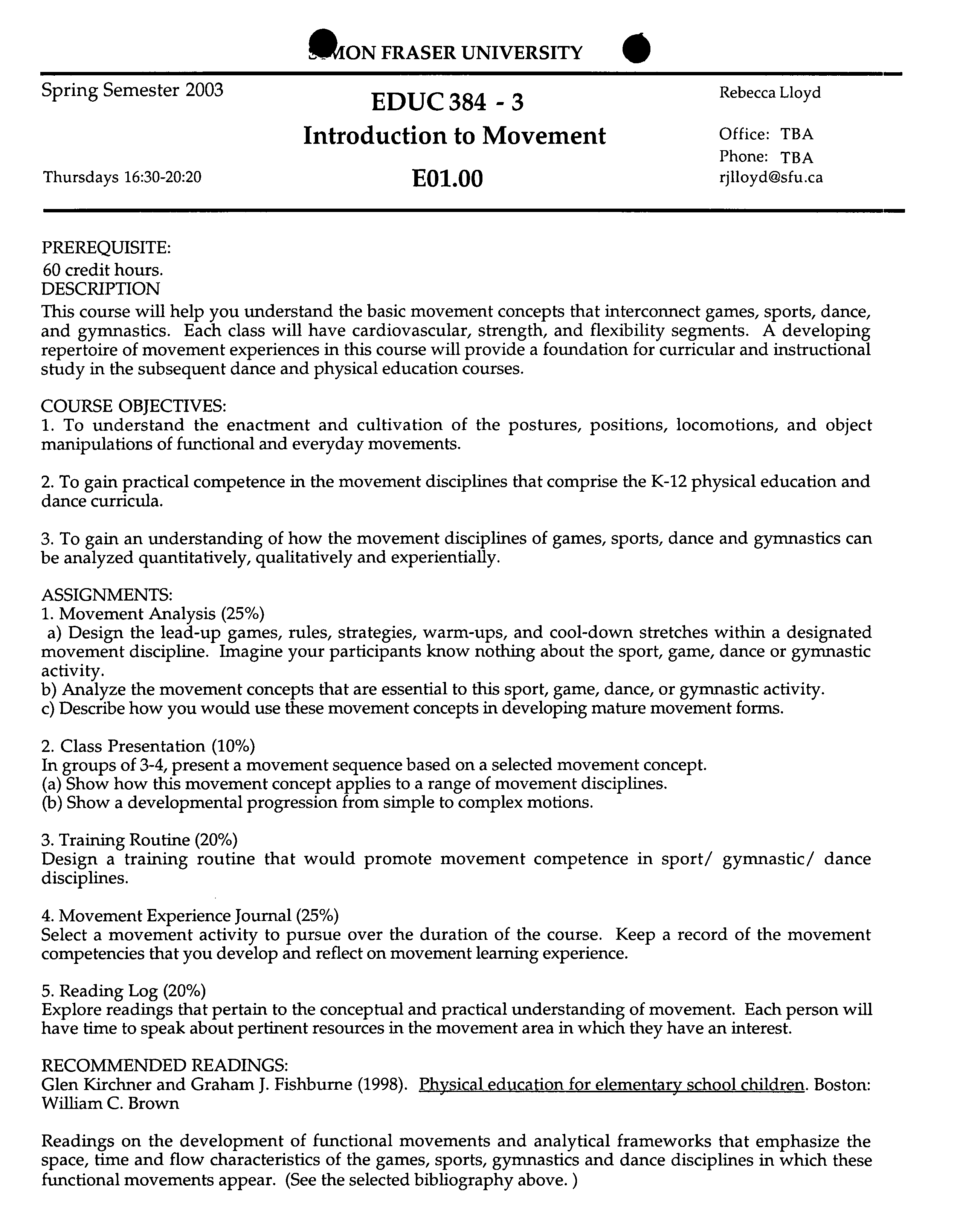•ON FRASER UNIVERSITY I*
Spring Semester 2003 ?
EDUC 384 - 3
?
Rebecca Lloyd
?
-
Introduction to Movement
?
Office: TBA
Phone: TBA
Thursdays 16:30-20:20 ?
E01.00 ?
rjlloyd@sfu.ca
PREREQUISITE:
60 credit hours.
DESCRIPTION
This course will help you understand the basic movement concepts that interconnect games, sports, dance,
and gymnastics. Each class will have cardiovascular, strength, and flexibility segments. A developing
repertoire of movement experiences in this course will provide a foundation for curricular and instructional
study in the subsequent dance and physical education courses.
COURSE OBJECTIVES:
1.
To understand the enactment and cultivation of the postures, positions, locomotions, and object
manipulations of functional and everyday movements.
2.
To gain practical competence in the movement disciplines that comprise the K-12 physical education and
dance curricula.
3.
To gain an understanding of how the movement disciplines of games, sports, dance and gymnastics can
be analyzed quantitatively, qualitatively and experientially.
ASSIGNMENTS:
1. Movement Analysis (25%)
a)
Design the lead-up games, rules, strategies, warm-ups, and cool-down stretches within a designated
movement discipline. Imagine your participants know nothing about the sport, game, dance or gymnastic
activity.
b)
Analyze the movement concepts that are essential to this sport, game, dance, or gymnastic activity.
c)
Describe how you would use these movement concepts in developing mature movement forms.
2. Class Presentation (10%)
In groups of 3-4, present a movement sequence based on a selected movement concept.
(a)
Show how this movement concept applies to a range of movement disciplines.
(b)
Show a developmental progression from simple to complex motions.
3. Training Routine (20%)
Design a training routine that would promote movement competence in sport/ gymnastic/ dance
disciplines.
4. Movement Experience Journal (25%)
Select a movement activity to pursue over the duration of the course. Keep a record of the movement
competencies that you develop and reflect on movement learning experience.
5. Reading Log (20%)
Explore readings that pertain to the conceptual and practical understanding of movement. Each person will
have time to speak about pertinent resources in the movement area in which they have an interest.
RECOMMENDED READINGS:
Glen Kirchner and Graham J
.
Fishburne (1998). Physical education for elementary school children. Boston:
William C. Brown
Readings on the development of functional movements and analytical frameworks that emphasize the
space, time and flow characteristics of the games, sports, gymnastics and dance disciplines in which these
functional movements appear. (See the selected bibliography above.)

